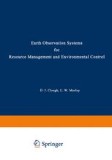Search
Search Results
-
High forest management
‘High forest’ is not synonymous with ‘plantation’, although many observers of modern British forestry probably think that it is. Planting, like...
-
Mine Dump Vegetation: Practice and Problems
Every activity of man causes some change to the environment. These changes range from barely discernable foot-tracks in recreation areas to the total...
-
Whither Fresh Waters and Their Biota?
The subject of ‘Whither Freshwater Biota?’ implies a general and directional change in freshwater fauna and flora which is not wholly favourable and...
-
Life-Style Alternatives
‘Only the rich can have a good life’—;this is the daunting message that has been drummed into the ears of all mankind during the last half-century or...
-
Utilization of environmental knowledge for watershed management in Northern Michigan
The Northern Michigan Environmental Research Program was conducted by the University of Michigan's Biological Station and Institute for Social...
-
Introduction to Air Pollution
The Engineers’ Joint Council on Air Pollution and Its Control defines air pollution as “the presence in the outdoor atmosphere of one or more...
-
Ventilation and Air Conditioning
Ventilation is defined as the process of supplying air to, or removing it from, any enclosed space by natural or mechanical means. Such air may or...
-
Pollution profile of a river
A host of chemical industries subject the river to pollutants such as acids, alkalies and their salts, trace metals and radionuclides belonging to...
-
The effect of chinook weather on urban heat islands and air pollution
Urban heat island intensity is stronger and air quality poorer under a chinook than under nonchinook weather. These discrepancies are explained in...
-
Aspects of chlorine utilization in the United Kingdom
Annual U.K. production of chlorine stands at around 10 6 tonnes. Less than 1.5% (15,000 tonnes) finds direct application as a biocide, of which 10,000...
-
Concepts of Remote Sensing Applications for Food Production in Develo** Countries
In recent years, advances in remote sensing methodology have outstripped the useful application of the technology to man’s needs. This may he partly...
-
The Chemistry of Water Pollution
Ever since man progressed from a hunting to an agricultural society, with the corresponding development of stable communities, the phenomenon of...
-
Man-Induced Eutrophication of Lakes
Many lakes the world over are becoming less desirable places on which to live because of nutrient wastes pouring into them from a man-changed...
-
The black duck in the Chesapeake Bay of Maryland: Breeding behavior and biology
The breeding behavior and biology of black ducks, Anas rubripes , were observed from 1953–1958 on the upper Eastern Shore of Chesapeake Bay in...
-
Flood Control
River-valley land has always had a great attraction upon early settlers; and for good reasons. In the early days, the rivers were the main arteries...
